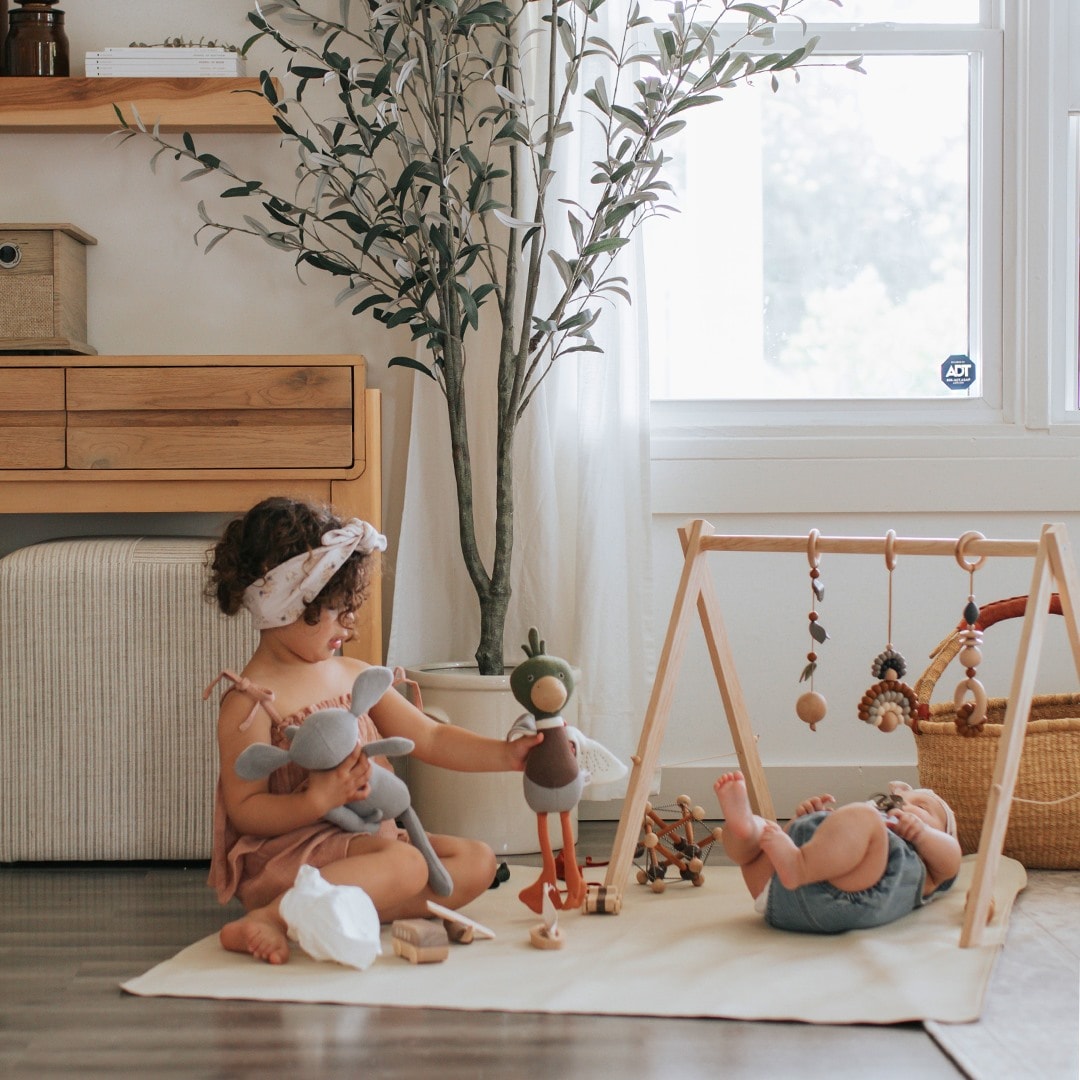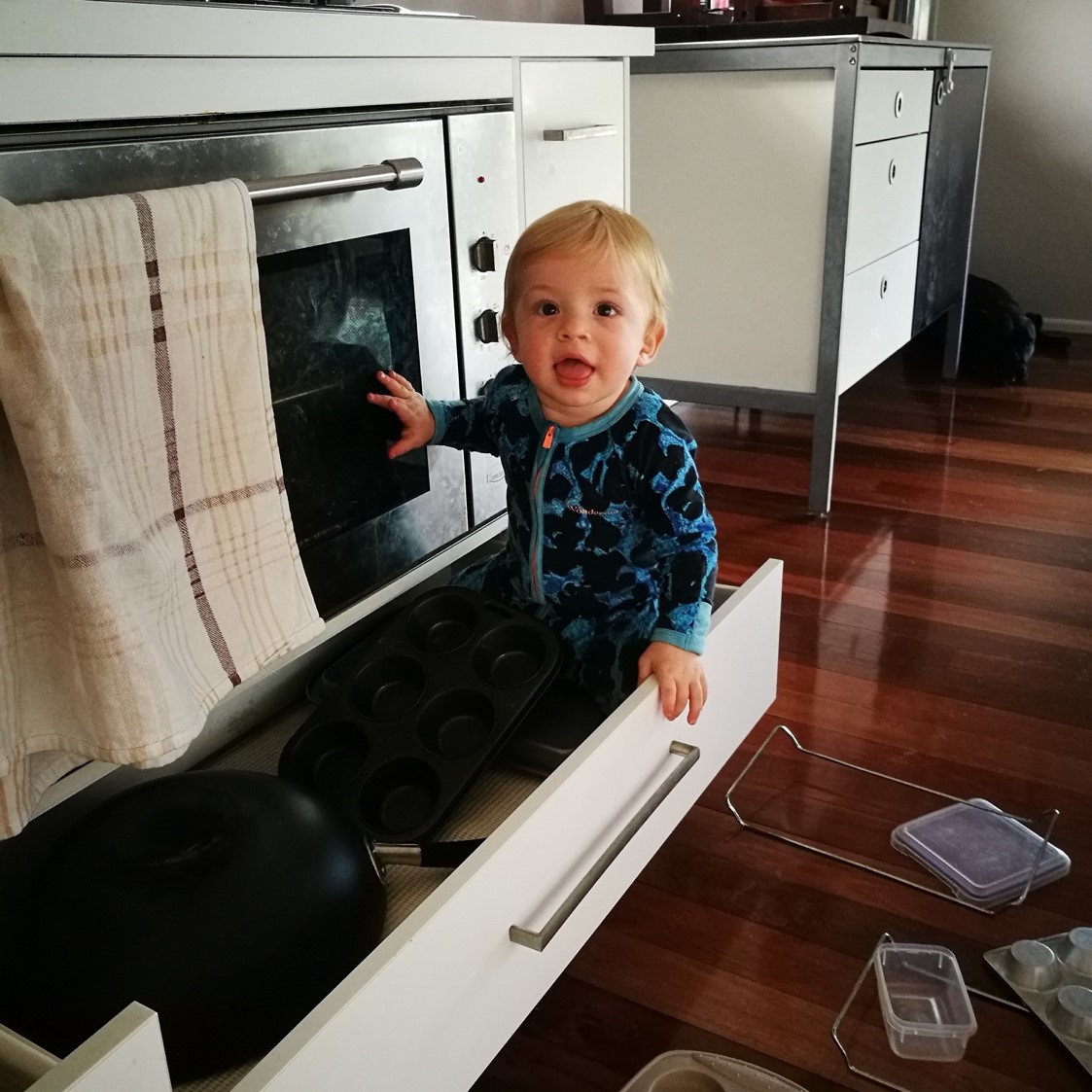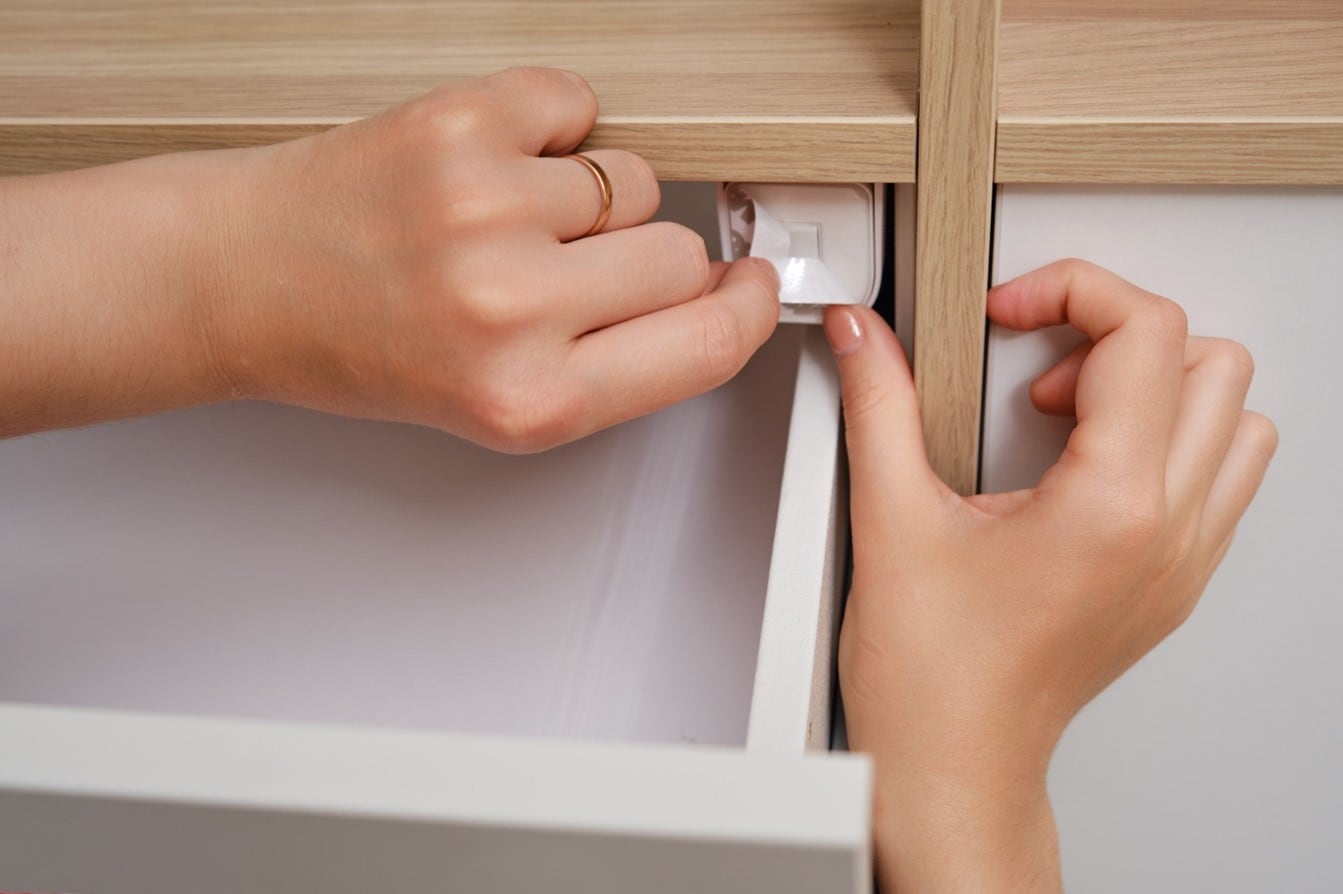Home is meant to be a safe place for you and your family—especially when it comes to the newborns and toddlers in your life. Whether you’re preparing to have a baby of your own or have a close family member or friend who may bring their child to your place often, their safety should be your first priority.
Given the amount of nooks and crannies in even the smallest houses, the thought of babyproofing your home may be overwhelming. Here are some simple things you can do to keep small children out of your cabinets and drawers and to help keep them safe in other areas around your home.
9 easy ways to child-proof your home
Babyproofing your home is much simpler than you think. Most of the steps you can take only require items you can easily find online or in retail stores and can be tackled on your own without any tools or professional help. This checklist can help you get started:
1. Use outlet covers to help protect your baby from shocks.
2. Place foam or rubber corner bumpers on furniture or any other objects with sharp corners that a child may run into.
3. Set up child safety gates to keep your baby away from stairs or certain areas.
4. You can also use doorknob covers to keep children out of off-limits rooms.
5. Anti-scald devices installed on your faucets and showerheads can help prevent burns from hot water.
6. Replace your current blinds with cordless blinds to avoid the risk of choking or strangulation.
7. Thick rugs or carpeting can help cushion falls in your baby’s nursery or play area.
8. Look for a toy box with an open top, as big lids may be dangerous for a child to lift.
9. Change the batteries in your smoke and carbon monoxide detectors regularly, or consider installing some if you don’t already have them in your home.
3 more things you can do to baby-proof your home
Not all babyproofing steps involve buying and installing latches or gates around your home. There are also a number of little things you can do right now that can make your home safer for babies and toddlers. Here are just a few:
1. Set your water heater to 120°: This will prevent the water from your showers and faucets from getting hot enough to cause serious burns.
2. Ensure your houseplants are nontoxic: A simple internet search can help you determine if your existing houseplants pose a danger if consumed by curious children. And if you’re not sure, err on the side of caution and remove the plant from your home.
3. Vacuum regularly: It may sound trivial, but the importance of vacuuming in regular intervals can’t be understated, as it helps clear the floor of small objects that may pose a choking hazard or cause other injuries.
How do you baby-proof a stove drawer?
Of all the rooms in the house, the kitchen may be the trickiest of all to baby-proof. Between knives, burners, breakable glassware, heavy pots and pans, there’s a lot to take into consideration. But one part of the kitchen that you may not have considered is the drawer beneath your stove. Thankfully, there are a few easy ways that you can child-proof it.
Some child safety locks that are advertised as being designed for fridges, toilet seats or other appliances will also work for your stove drawer. Look for a latch that uses magnets to connect the drawer to the oven door.
One alternative is to simply remove everything from the drawer and leave it empty. While your baby may still get curious and open the drawer, if there’s nothing in there to keep them occupied, they’re likely to get bored and crawl elsewhere. Of course, this solution only works if you have the space to safely store the contents of your drawer in another location.
If you do need the storage space that your stove drawer offers, you can replace the contents with child-safe items like plasticware. However, you’ll need to be mindful of how hot the drawer gets when the stove is on, for the safety of your baby—and your plasticware.


How do you baby-proof a dresser?
Dressers are one of the trickier pieces of furniture to child-proof, because not only can the drawers be opened, but toddlers can use the knobs like a ladder to climb the dresser, which could cause it to tip over. When babyproofing your home, it’s important to anchor your dressers and other heavy furniture and appliances to the walls. There are a wide variety of furniture anchors on the market to choose from. Some are specifically designed for certain kinds of furniture, while others are more versatile, and almost all of them can be set up with just a few screws. Be sure to shop around to find the option that best suits your needs.
Once your dressers are securely anchored to the wall, you’ll want to baby-proof the drawers as well. One of the best ways to do this is with magnetic child-safety locks, which can be installed on just about any cabinets and drawers in your home.
How do magnetic baby locks work?
Magnetic baby locks are simple devices that prevent your cabinets and drawers from being opened without the required magnetic “key.” A latch attached to the inside of the cabinet or drawer will hold it shut, and will only release when the magnetic key is held in front of it. If you know that you’ll be in and out of a particular cabinet often, most brands of magnetic locks can be temporarily disabled, allowing you to open the door without the key.
Magnetic baby locks are an ideal choice for your cabinets and drawers because they do little to no damage to your drawers and don’t require tools to install.
How can I child- and baby-proof my cabinets without drilling?
In addition to magnetic child-safety locks, there are a variety of other kinds of locks, latches and DIY methods of babyproofing your drawers and cabinets without drilling. Here are some additional options:
- Adhesive cabinet locks: Consists of two anchor points connected together. Stick the two anchors on two different surfaces of your cabinets to secure them.
- Cord cabinet locks: Best for round knobs, wraps around the knobs to prevent the doors from being opened.
- Sliding cabinet locks: Takes the form of a plastic loop that tightens around the knobs.
- Spring latch locks: Made up of a hook and a spring, push one or the other to lock or unlock the cabinet
- Rubber bands: Like a DIY cord lock, wrapping rubber bands around the knobs can serve a similar purpose. Consider wrapping it twice or in a figure 8 shape to ensure it’s tight enough.
- Yardstick/ruler: If you have drawers or cabinets that have pull handles, you can slide a long ruler or similarly shaped object between the handles.


Should I have a professional install my babyproofing?
If you’re not particularly handy or are feeling overwhelmed, the peace of mind of knowing that your child-safety gates and latches are installed correctly may outweigh the cost of hiring a professional. The quality of professionally installed babyproofing hardware may also be better than some of the DIY options you can find in stores.
Of course, this all comes with a higher price tag, and whether or not hiring a professional is worth it is entirely up to you.
When it comes to child safety, there’s no such thing as overkill.
ADT offers a wide array of smart home security and life safety devices to help you protect your precious little ones—and we can even help you with a little bit of babyproofing. Door/window sensors can also be placed on cabinets so you get an alert whenever they’re opened. Indoor cameras let you see what the kids are up to from the other room. Professionally monitored smoke and CO detectors help protect your whole family from unseen hazards.
There’s no better time to start thinking about home security than when you have a child on the way. We’re ready to help you customize the perfect smart home security system to meet your needs.
Frequently Asked Questions about Babyproofing
What is the most effective way to baby-proof my home?
The easiest way to help protect your child from harm around the home is to isolate them to one safe place within your home using a baby gate or jumper to keep them in one place. This is especially helpful while you’re cooking or taking care of other tasks that may prevent you from keeping your eye on them for a short period of time.
Keeping chemicals, medicine and cleaning or laundry supplies out of reach is another easy and effective way to help protect your baby. Consider babyproofing your cabinets and drawers with magnetic or adhesive safety locks, by keeping these items behind locked doors or by simply moving them up high and out of reach.
When should you start babyproofing your cabinets and drawers?
The earlier the better. While most steps toward babyproofing your home are quick and easy, some can be time-consuming. For that reason, it’s best to get started a few months before your baby is born.
You should also take another pass at babyproofing your home once the baby starts to crawl (6-10 months). This time, look for places around your home that may pose a risk to a baby on the move.
How do you install magnetic baby-proof locks?
The specific instructions may vary from brand to brand, but most magnetic child safety locks attach to the inside of the cabinet with an adhesive strip and will simply snap into place once aligned correctly.
Related Articles:


